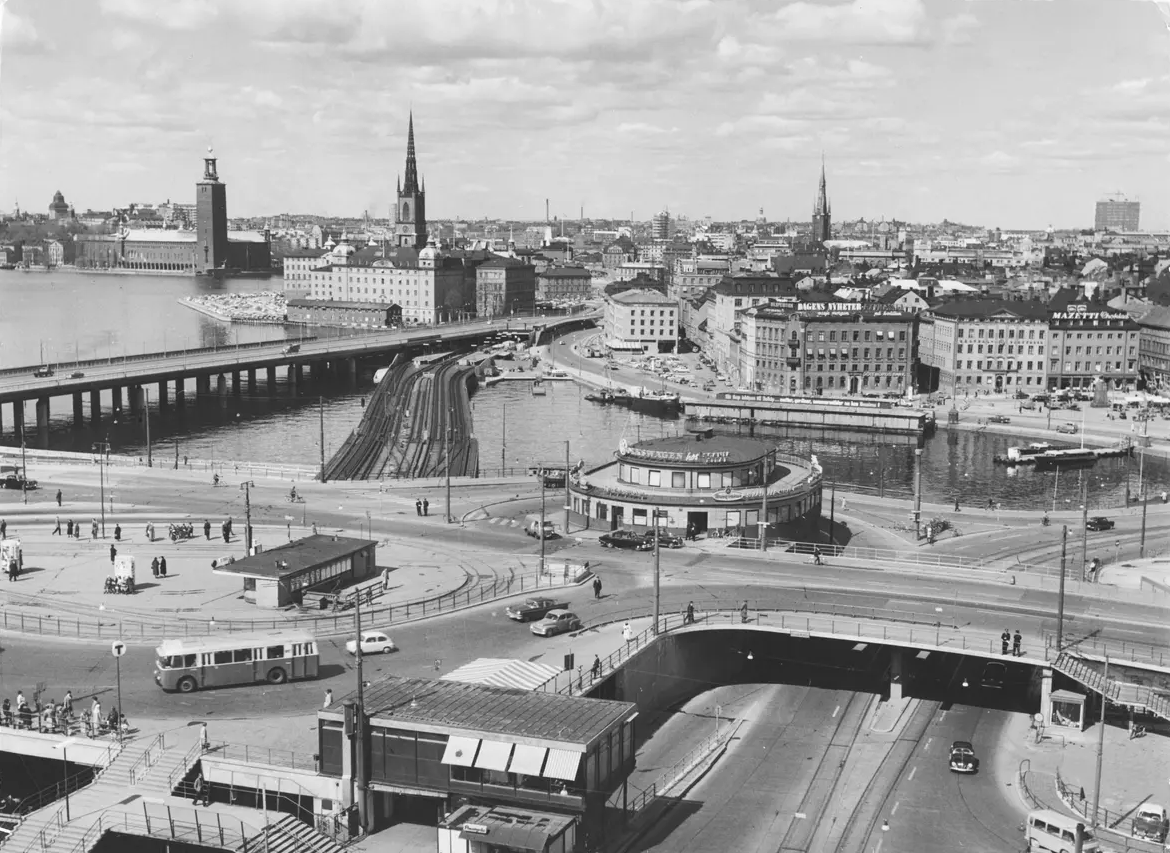In 2025, the Nordic Road Association (NVF) celebrates its 90th anniversary. Since 1935, NVF has brought together road and transport professionals from across the Nordic region by providing a neutral and expert platform for knowledge exchange, development and cooperation. Nine decades on, its work continues, broader in scope and more relevant than ever.
The story of NVF began on 19 June 1935 in Stockholm, during the first joint Nordic Road Congress. The idea of establishing a permanent platform for Nordic cooperation had emerged earlier at international forums. It was at the PIARC Congress in Munich in 1934 that the decision was made to formalise the partnership. Following the first congress, each country established its own national association, creating a structure for regular and structured collaboration.
 NVF Executive Committee meeting 1940.
NVF Executive Committee meeting 1940.
At the time of NVF’s founding, Nordic roads were largely gravel-surfaced and lacked sufficient structural capacity. Heavy vehicles were rare, and frost protection was virtually non-existent. As car ownership expanded, road development became a major national and regional priority. From the 1950s onward, motorway projects, new pavement structures and traffic safety rose to the top of the agenda. In response, NVF’s working committees began developing joint technical guidelines, terminology and recommendations to support comparability and compatibility between national approaches.
One of NVF’s long-standing strengths has been its ability to respond to emerging needs. In the 1990s, the focus shifted to data-driven planning and digitalisation. The development of road databases, traffic simulation tools and geospatial solutions became part of everyday practice. At the same time, many road administrations transitioned to client and contractor models. Alongside engineers, new expertise entered the sector, including environmental specialists, legal advisors, economists and landscape architects. NVF reflected this development by broadening the range of professionals engaged in its work.

Slussen in Stockholm, Sweden, was the first multi-level traffic interchange in the Nordic countries. It opened in November 1950. Photo: André and Irene Reisz – Nordic Museum Foundation, Sweden.
Today, NVF is composed of six member countries: Denmark, Faroe Islands, Finland, Iceland, Norway and Sweden. Each country has a national NVF association that nominates members to the working groups. In the current period (2024 to 2028), there are nine working groups. These focus on the design, operation and development of key areas including Bridges, Nordic Construction Market, Operation and Maintenance, Road Design, Road Freight Transport, Road Technology, Road Traffic Safety, Tunnels and Urban Transport and Transport Planning. In addition to the working groups, there is one overarching theme for the 2024–2028 period, Climate and Environment. This together with the United Nations Sustainable Development Goals influences the priorities of every working group.
NVF also functions as a platform for professional growth and learning. Its working groups bring together both experienced professionals and early-career specialists. For many, NVF has provided a pathway to building international expertise from the start of their careers. The association has long served as a space where engineers can share knowledge, test ideas and strengthen Nordic expertise across borders.
The 90-year history of NVF is also a story of how the road network is more than just physical infrastructure. It exists at the intersection of technology, governance, the environment and society. Understanding these intersections requires exactly what NVF represents: Expertise, trust and long-term cooperation.
